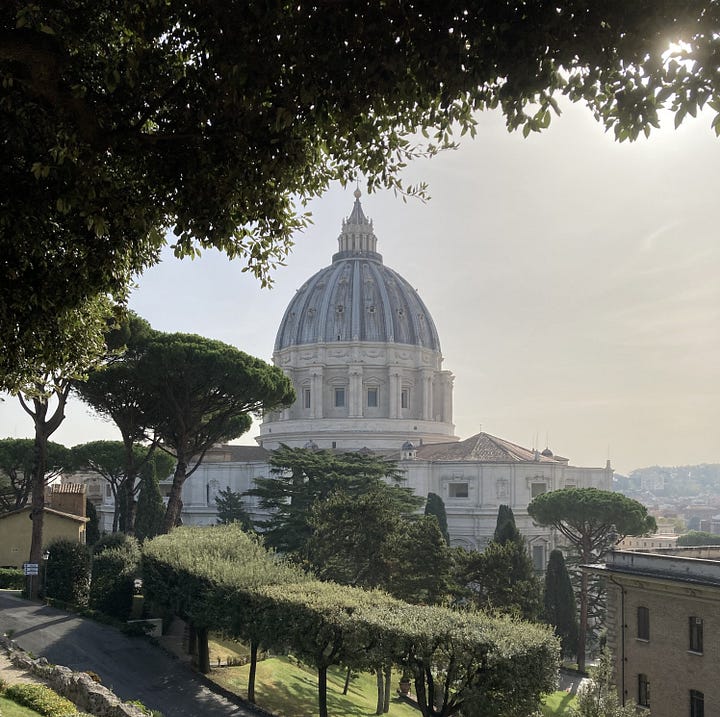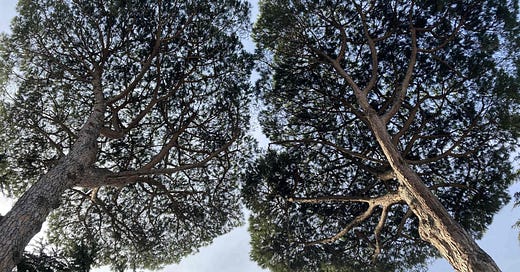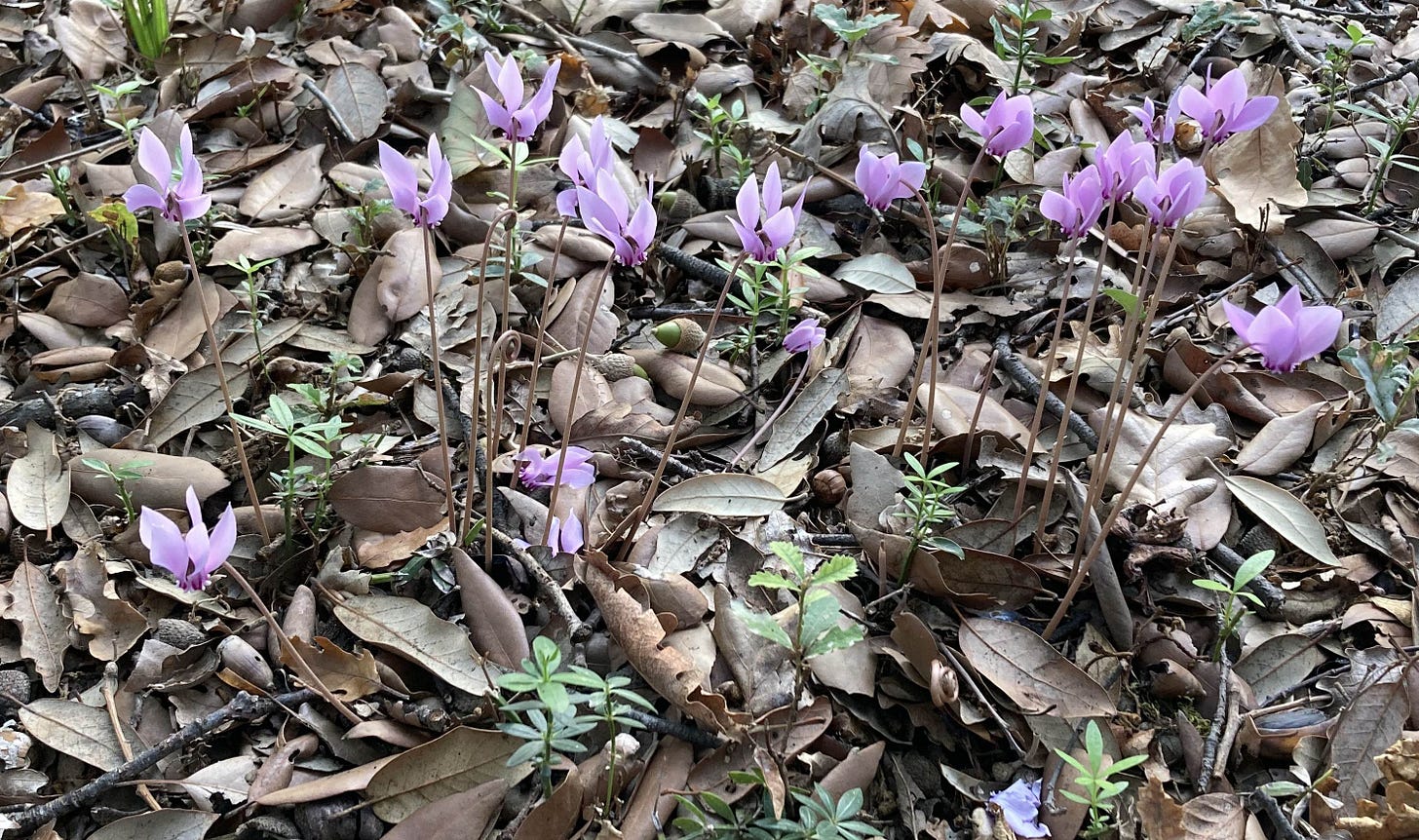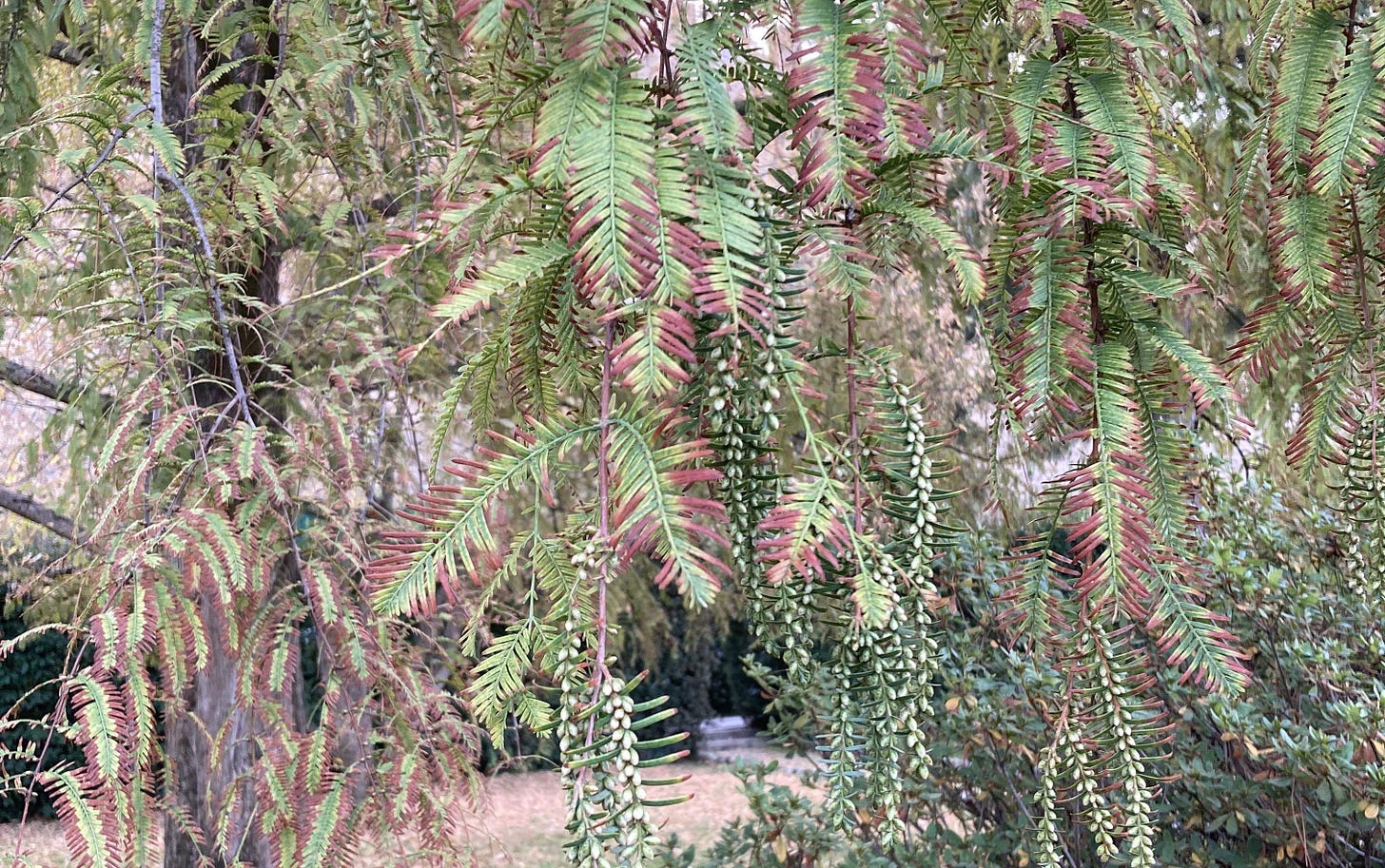I intended today’s article to be just for paying subscribers, but I’ve had some exciting news, so I decided to share it and make the article which follows available to everyone.
I’ve been selected as one of the writers to receive a mentorship from the New Zealand Society of Authors. For the rest of the year, I’ll have the support of one of their amazing mentors to develop my fiction-writing skills as I revise the novel I’m working on. It’s a real honour to receive this mentorship and to be included in what is clearly a very talented group.
Although my writing here has nothing to do with my fiction writing, which is a historical mystery, my Substack writing has played a huge part in my development as a writer. So I wanted to thank all of you for your support – not just my paying subscribers, but everyone who has commented or replied to the emails or clicked the like button. It means so very much to me.
Wherever I go in the world, if I have half a day free, I’ll find the botanical gardens. It doesn’t matter what else is on offer, a garden is always worth my time. If I can’t get to the botanical gardens, I’ll find other gardens, and if there aren’t any gardens, I’ll botanize road verges and waste areas. It’s not quite the same, though.
Each garden tells me different stories. These stories are a combination of the climate where they are located, the people who built and owned the gardens, the plants which have been planted and the season when I visit. The stories are different from those of wild areas, because gardens are constructed and cultivated. They carry history, some of it troubling, as with the opulent gardens in Italy built for Renaissance cardinals, or Kew, with its connections to imperialism and colonisation.
Just as I love the music of the Renaissance church or the Tudor court, I can still love the gardens while being aware of this past. So, I wanted to share some of the gardens I’ve seen and their stories with you over the next few weeks.
I’m beginning in Rome, for no other reason than when I was looking through my photographs I found one that I wanted to share. It’s a photograph of two pine trees – specifically, these are stone pines They are native to the western Mediterranean, mainly Spain and Portugal, but also including small areas of France and Italy. They aren’t strictly native to Rome, but they are native to areas close by and have been widely planted in the city.
The stone pine is my favourite kind of pine. It has a distinctive form, with a long, clean trunk and a broad canopy, which sometimes leads to it being known as the umbrella pine. If you’ve been to Rome, you’ll probably know the trees that I mean, because they are everywhere and there’s nothing else like them. Older trees also have beautiful bark – a mosaic of reddish tesserae separated by grey furrows.
I photographed these trees in the gardens of the Vatican. I can’t remember who recommended that I do a tour of the Vatican gardens, but it was a wonderful suggestion. I arrived before 9, and the entrance to the Vatican was already swarming with tourists. The garden tour, though, took a group of around twenty, and there was only one tour at a time. The gardens were blissfully calm.


The total area of the Vatican is only 44 hectares, and half of that area is garden. There has been a garden on the site since the 13th century, but I don’t think much, if anything, survives from those days. There were, however, some venerable olive trees – while I don’t know how old they were, they were certainly the largest I had ever seen. They weren’t tall, because olive trees never are, but the trunks were massive.
Most of the Vatican gardens are in the Italian Renaissance style, which means they are formal, symmetrical and pruned into submission. There aren’t a lot of flowers, but I did come across a patch of cyclamens in a area of woodland. I think of cyclamens as finicky house plants – I’ve never been successful at keeping them alive, and I can manage most plants. However, there are also hardy, garden species. I’ve got one which came from a neighbour’s garden and it pops its head up every now and again. What I love about cyclamens is that their petals bend backwards, away from the centre of the flower, as if they’ve been blown back in a high wind.
Cyclamens are mainly Mediterranean species, which means the ones I saw in the Vatican gardens could have been native there. They were growing under oak trees, and if you look closely in the photo, you’ll see some acorns.
At one point in the garden tour, I was surprised to see a very familiar plant a long way from home – tī kōuka. I suppose I shouldn’t have been surprised to see it there, because I do find it now and again, cultivated in places I wouldn’t expect. However, the Vatican gardens struck me as the most exotic place I’d ever seen it growing.

Much as I love tī kōuka, it wasn’t the tree that brought me the greatest excitement. I reserved that for the dawn redwood. As its name suggests, it’s a relative of the redwoods of the western US, but it comes from a small area of China. I’ve never been to China, but I have seen cultivated plants, so I knew what I was looking at. There’s a magnificent tree in Queens Gardens in Nelson – I used to pass it often because it was near my office. The Nelson tree was large enough to have developed the distinctive, fluted trunk. It looks like a candle which has burned for a long time and is encrusted with trails of dripping wax. The specimen in the Vatican gardens was younger, but it was festooned with male cones and the tips of the needles were just beginning to turn red with the start of autumn – it’s one of the few conifers to lose its leaves in winter.
The dawn redwood in the Vatican gardens might not have been old, but the species is ancient. It’s so ancient that the plants growing today are indistinguishable from fossils which date back 100 million years. In fact, it was well-known from fossils long before botanists ever saw a live plant. In the 1940s, Chinese botanists were trying to identify an unusual tree they had seen near Chongqing in central China. While it was known to locals, the botanists couldn’t figure out where it fitted in relation to other species. It seemed to resemble American redwoods, but there was nothing like it found any closer to them than California and Oregon. This simply didn’t make sense to them. How could be so far from the home of its nearest relatives?
The botanists were stumped until they sent a specimen to Professor Hsen Hsu Hu in Beijing. He recognised it as being the same as fossils described by a Japanese palaeobotanist (someone who studies fossil plants). Once, it had been widespread, found not only in China but Japan, Russia, Canada and the USA. By the time Professor Hu recognised what it was, there were only about 1000 trees remaining. Professor Hu had received his PhD at Harvard and was well-connected with American botanists. He arranged for seeds to be collected, some of which were sent to one of his Harvard colleagues. Soon, this tree which had once kept company with dinosaurs was established in botanical collections around China and around the world.









Congratulations Melanie! That’s fantastic. Just what you need. I look forward to seeing what comes next!
Thank you for sharing the beautiful and fascinating gardens with us. Many congratulations and best wishes in your new adventure!!